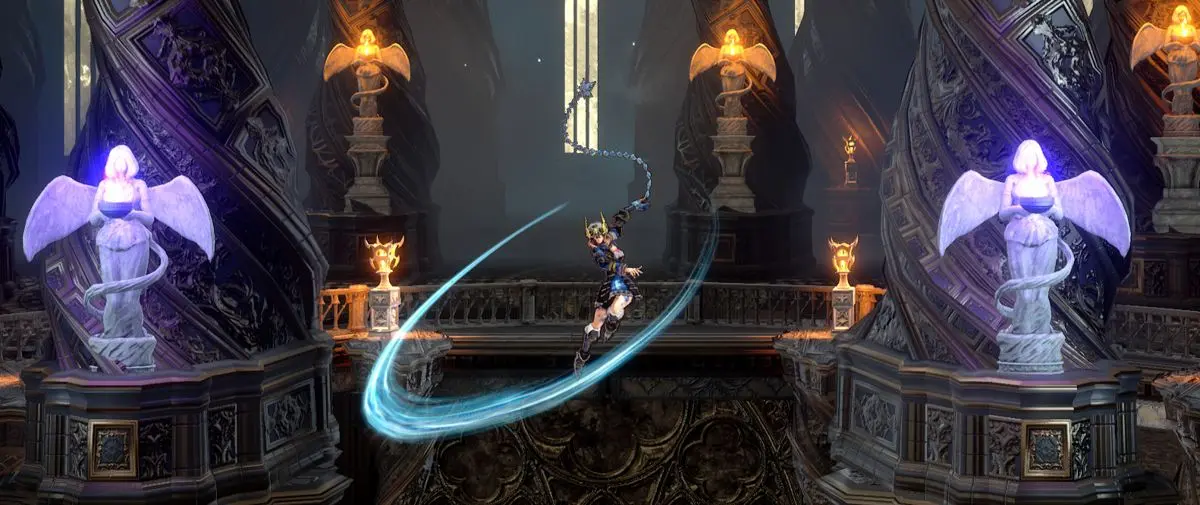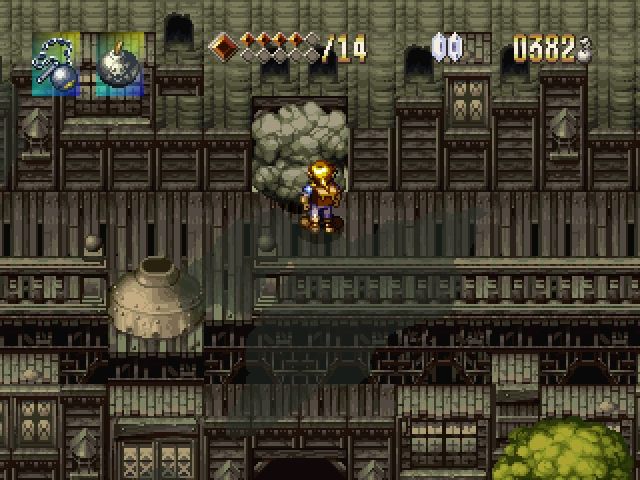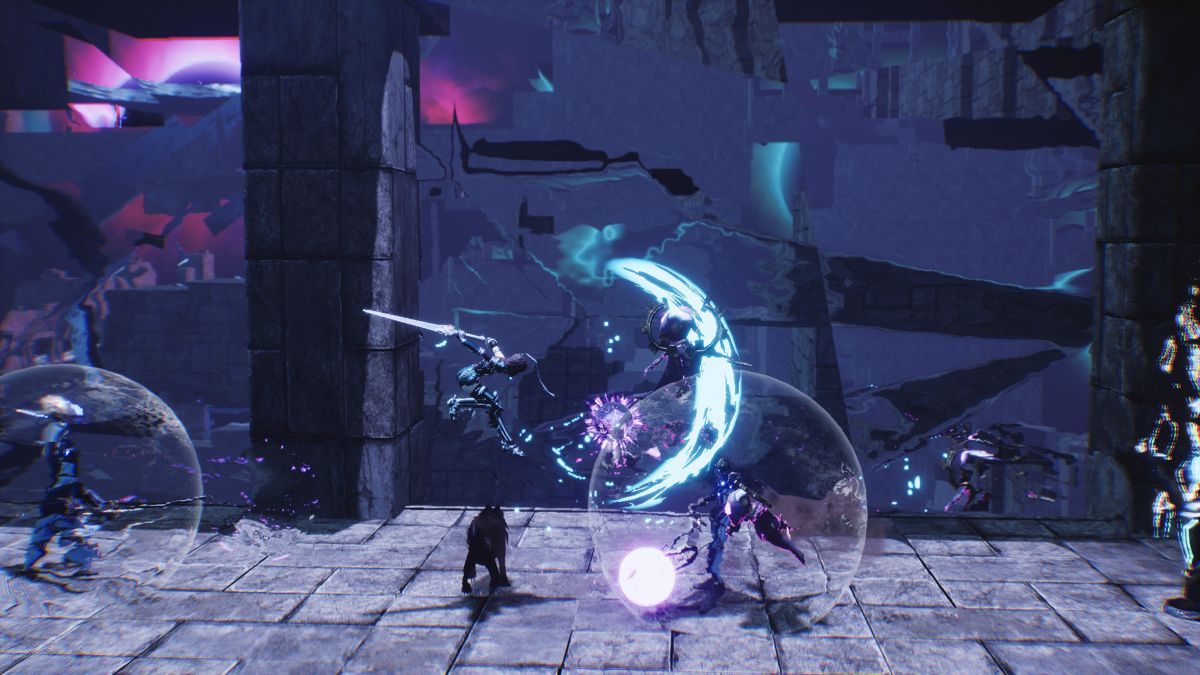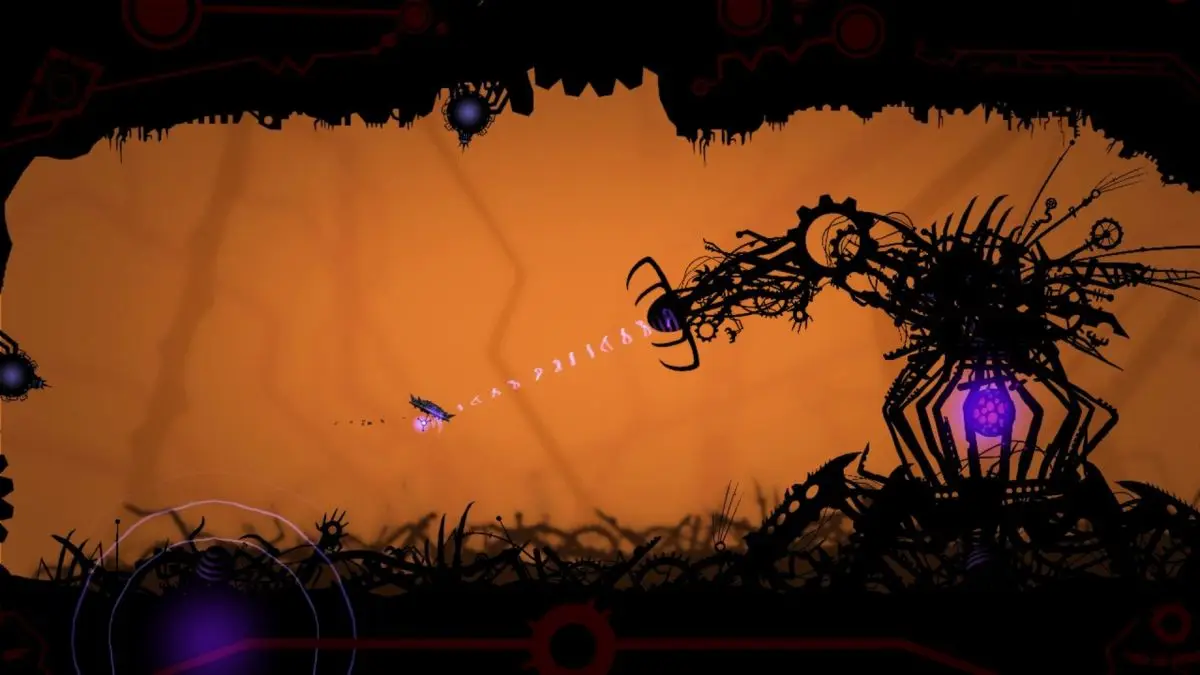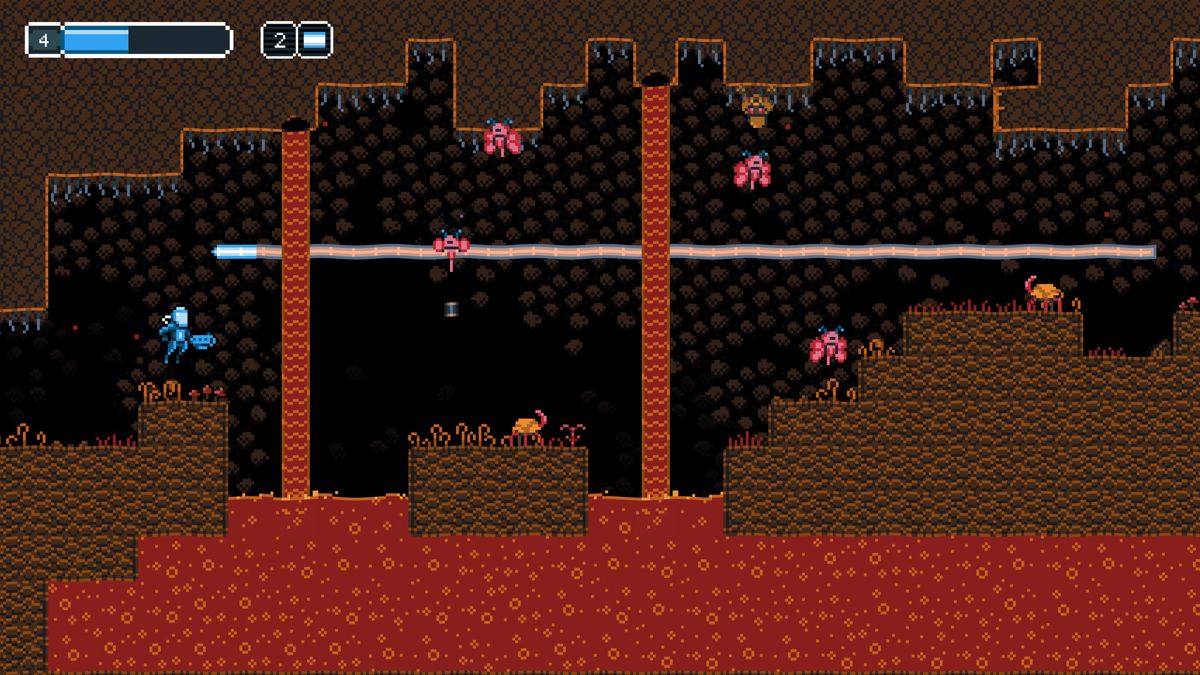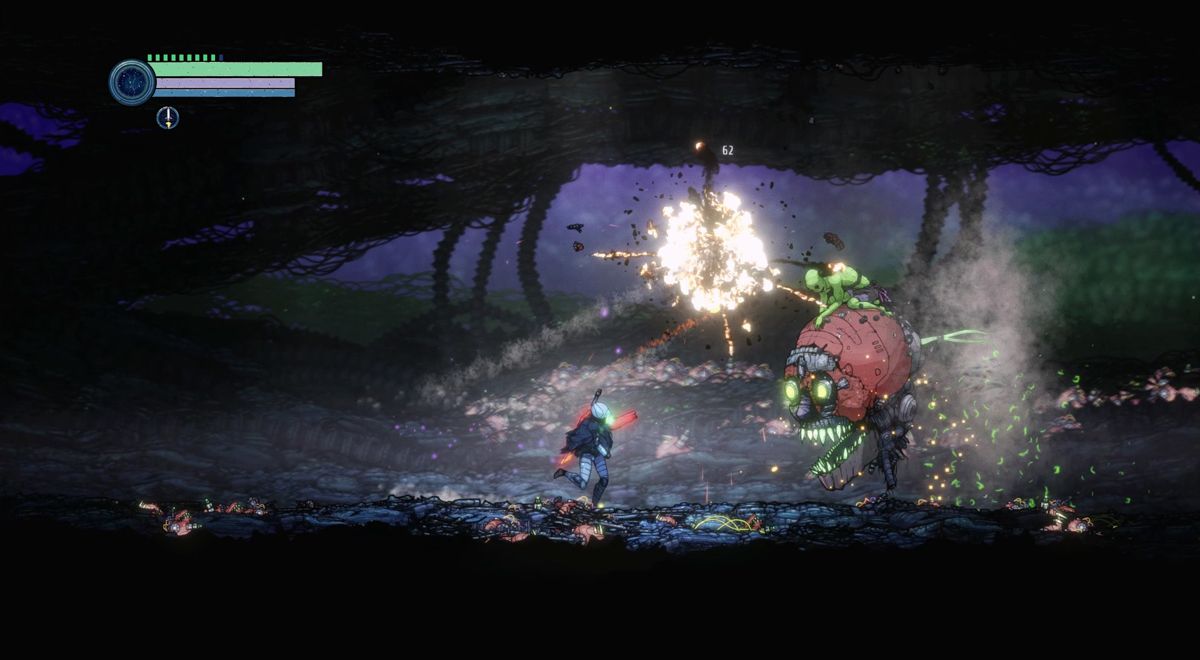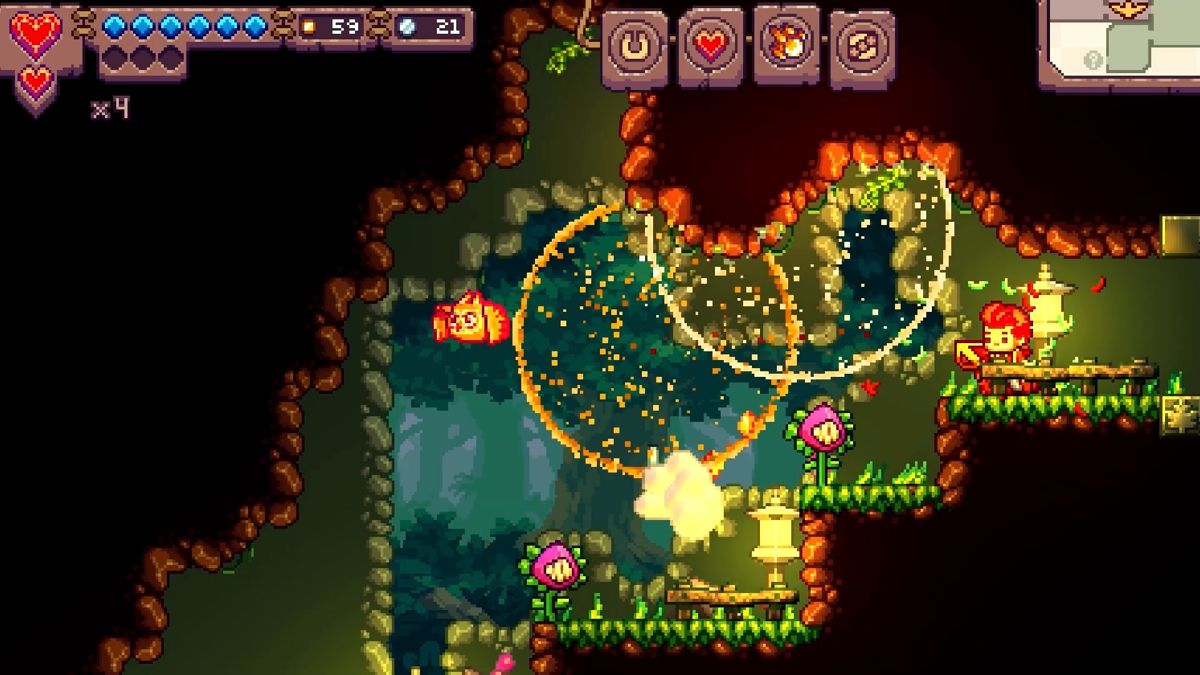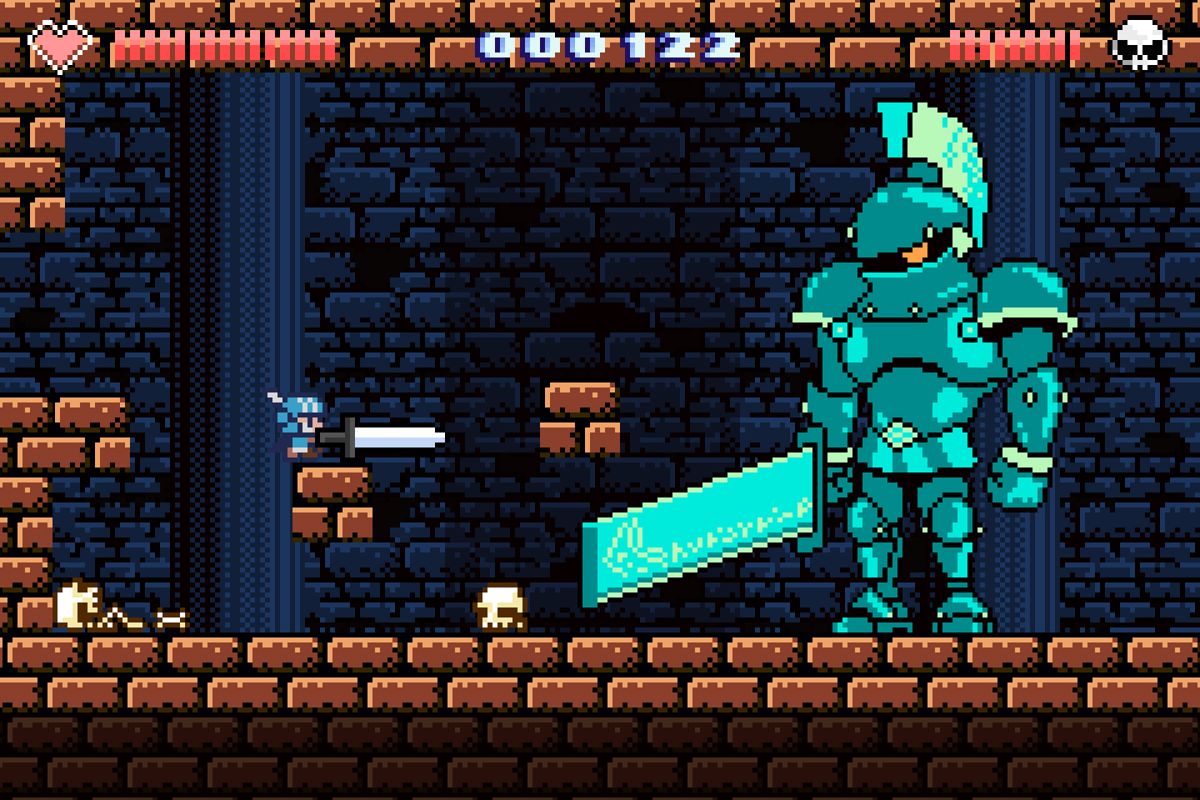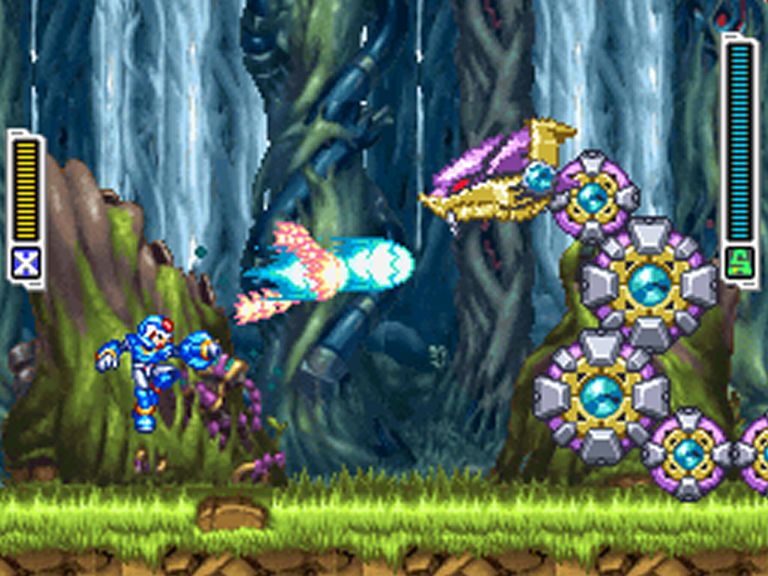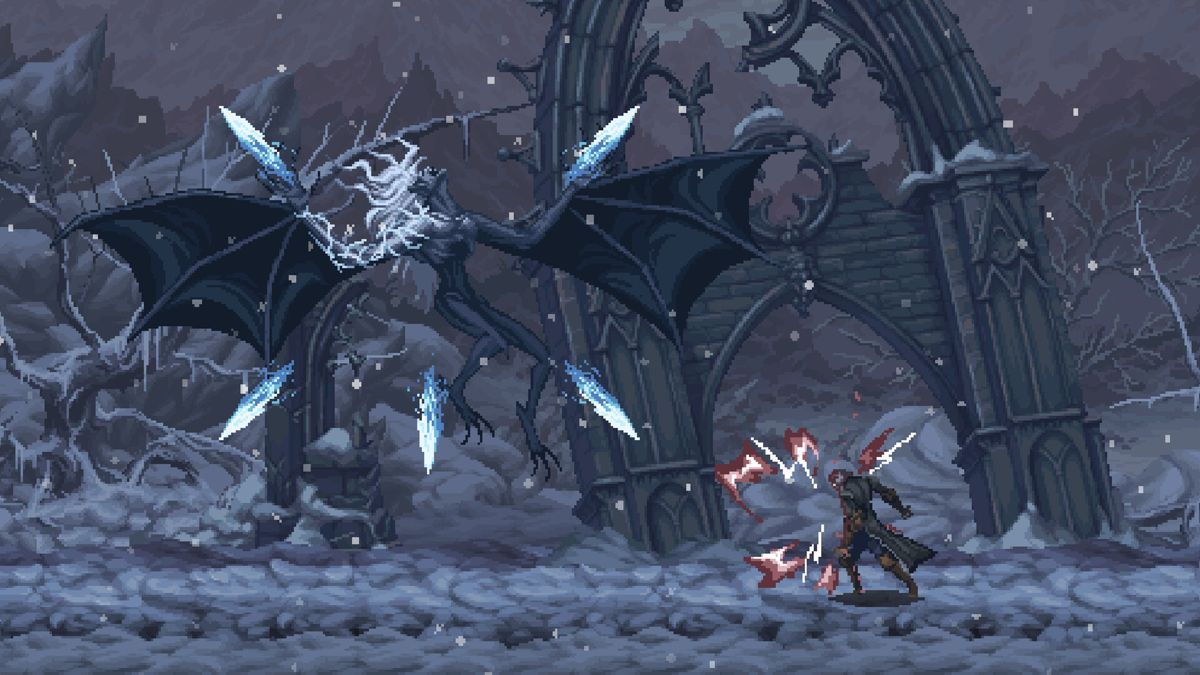Results
Bloodstained: Ritual of the Night
igavania, grindy, hidden areas
Bloodstained: Ritual of the Night is a critically acclaimed Metroidvania-style action-adventure game developed by Koji Igarashi, the godfather of the Igavania subgenre. Drawing inspiration from his work on the iconic Castlevania series, Igarashi has crafted a meticulously designed game that pays homage to the genre's roots while introducing fresh mechanics and elements. The game stands out for its intricate level design, featuring a vast and interconnected castle filled with labyrinthine passages, hidden rooms, and secret shortcuts. Exploration is rewarded with a wealth of power-ups, weapons, and equipment, allowing players to backtrack and access previously inaccessible areas in true Metroidvania fashion. Combat is a central pillar of the experience, with a diverse array of enemies that require strategic positioning and skillful use of various weapons and abilities. Bloodstained boasts a vast arsenal, including swords, spears, whips, and a variety of magical abilities, each with its own unique properties and attack patterns. One of the game's standout features is the Shard system, which allows players to equip and mix-and-match various abilities and passive bonuses, creating unique character builds tailored to their playstyle. This system adds depth and replayability, encouraging experimentation with different shard combinations. Visually, the game showcases a stunning art style, with meticulously crafted backgrounds that capture the gothic horror atmosphere. The attention to detail in the character designs and enemy animations is truly impressive, evoking a sense of nostalgia while maintaining a distinct and modern aesthetic. Overall, Bloodstained: Ritual of the Night is a must-play for fans of the Metroidvania genre, offering a challenging and rewarding experience that pays homage to its roots while introducing fresh ideas and mechanics that solidify its place as a modern classic.
Alundra
fantasy, challenging, environmental puzzles
Alundra is a critically acclaimed action-adventure RPG developed by Matrix Software and published by Working Designs for the PlayStation in 1997. Often compared to The Legend of Zelda series, Alundra stands out for its darker, more mature narrative and challenging puzzle design. The game follows the titular protagonist Alundra, a young elf with the ability to enter people's dreams. He arrives in the village of Inoa, which is plagued by deadly nightmares. The story takes a grim turn as villagers begin dying in their sleep, and Alundra must use his dream-walking abilities to save them and uncover the source of the evil. Key features that set Alundra apart in its genre include: 1. Complex, often brutally difficult puzzles that require precise timing and execution. 2. A darker, more mature storyline dealing with themes of death, fate, and religion. 3. Smooth, fast-paced combat with a variety of weapons and magic. 4. Detailed 2D sprite work and environments, with some pseudо-3D elements. 5. A memorable soundtrack composed by Kohei Tanaka. The game's difficulty, particularly in its puzzles and boss fights, is notably higher than many of its contemporaries. Its dream-exploration mechanic adds a unique twist to the typical dungeon-crawling formula. Alundra received high praise for its storytelling, level design, and challenge, cementing its place as a cult classic in the action-RPG genre.
AeternoBlade II
fantasy, challenging, hidden areas
AeternoBlade II is an action-platformer with RPG elements, released in 2019 as a sequel to the original AeternoBlade. The game features three playable characters: Freyja (returning from the first game), Bernard, and Felix, each with unique abilities and fighting styles. Notable features include: 1. Time manipulation mechanics: Players can rewind time, create time clones, and freeze enemies, adding strategic depth to combat and puzzle-solving. 2. Combo-based combat system: The game emphasizes chaining attacks and utilizing each character's unique skills to defeat enemies efficiently. 3. Dimension-shifting gameplay: Some levels require players to switch between different dimensional planes to progress and solve puzzles. 4. Multiple gameplay perspectives: The game alternates between 2D side-scrolling sections and 3D arena-style combat areas, offering variety in gameplay. 5. Skill tree system: Characters can be customized and upgraded through a branching skill tree, allowing for different playstyles. 6. Intertwining storylines: The narrative follows the three protagonists' separate but connected journeys, eventually converging into a unified plot. 7. Boss battles with puzzle elements: Many boss fights incorporate time manipulation and environmental interaction, requiring both combat skills and problem-solving. 8. New Game+ mode: Allows players to replay the game with upgraded characters and access previously locked areas. While AeternoBlade II builds upon its predecessor, it received mixed reviews due to technical issues at launch and some criticism regarding level design and controls. However, it maintains a niche following among fans of the genre who appreciate its unique time manipulation mechanics and character variety.
Insanely Twisted Shadow Planet
environmental puzzles, sci-fi, pixel art
Insanely Twisted Shadow Planet is a modern take on the classic shoot 'em up genre, developed by FuzzyEyes and published by Microsoft Studios. While it may appear simplistic at first glance, this game offers a unique and immersive experience that sets it apart from its contemporaries. One of the standout features of Insanely Twisted Shadow Planet is its distinctive art style. The game world is presented in a striking silhouette aesthetic, with intricate backdrops and enemy designs that are both visually stunning and unsettling. This approach creates a sense of mystery and foreboding, adding depth to the gameplay experience. Gameplay mechanics in Insanely Twisted Shadow Planet are not limited to traditional shoot 'em up elements. Players must navigate through intricate, maze-like levels, solving environmental puzzles and utilizing various power-ups and abilities to progress. This introduces a layer of exploration and problem-solving that complements the action sequences. One notable aspect of the game is its emphasis on narrative and storytelling. While the plot is conveyed through minimal text and visual cues, it manages to captivate players with its enigmatic and atmospheric presentation. The game's world is rich with details and lore, inviting players to uncover its secrets and piece together the underlying story. Insanely Twisted Shadow Planet also features a dynamic and reactive soundtrack that evolves alongside the gameplay. The music, composed by Steve Burke, adds an extra layer of tension and intrigue, seamlessly blending with the visuals to create an immersive and atmospheric experience. Overall, Insanely Twisted Shadow Planet offers a refreshing take on the shoot 'em up genre, combining engaging gameplay mechanics with a distinct visual style and a compelling narrative. Its attention to detail and innovative design elements make it a standout title for fans of the genre seeking a unique and memorable experience.
Escape from Thethys
sci-fi, pixel art, challenging
Escape from Thethys is a 2D metroidvania-style action-platformer released in 2018. The game is set on the underwater moon Thethys, where the player takes control of a deep-sea diver trying to escape a mysterious underwater facility. Key features of the game include: 1. Procedurally generated levels: While the overall structure of the game world remains consistent, the specific layouts of rooms and placement of items change with each playthrough, enhancing replayability. 2. Unique weapon system: The player's primary weapon is a harpoon gun that can be upgraded and modified throughout the game, allowing for various combat strategies and puzzle-solving approaches. 3. Environmental hazards: The underwater setting introduces challenges like pressure management and oxygen conservation, adding an extra layer of complexity to exploration. 4. Boss battles: The game features large-scale encounters with mutated sea creatures and advanced security systems. 5. Multiple endings: The player's choices and actions throughout the game can influence the final outcome, encouraging multiple playthroughs. 6. Retro-inspired visuals: The game uses a pixel art style reminiscent of 16-bit era games, but with modern lighting and particle effects to enhance the underwater atmosphere. 7. Nonlinear progression: While there is a main story path, players can often tackle areas in different orders, discovering alternate routes and secrets. 8. Limited resources: The game emphasizes resource management, with scarce ammunition and health pickups encouraging careful play. Escape from Thethys stands out in the metroidvania genre for its unique setting and the way it incorporates underwater survival elements into the traditional exploration and upgrade-based gameplay.
Ghost Song
igavania, sci-fi, challenging
Ghost Song is a Metroidvania-style game developed by Old Moon and published by Humble Games in 2022. Here are some key aspects of the game: 1. Setting: The game takes place on the desolate moon of Lorian, featuring a mysterious and atmospheric sci-fi environment with bio-mechanical elements. 2. Narrative: The story follows a female protagonist who awakens from a long slumber with no memory of her past. The narrative unfolds through environmental storytelling and interactions with other characters. 3. Combat system: Ghost Song features a unique blend of ranged and melee combat. The protagonist's arm cannon can be charged for more powerful shots, and there's a risk-reward system where players can sacrifice health for increased firepower. 4. Upgrade system: Rather than traditional experience points, the game uses a "Nanogel" system for upgrades. Players can choose to enhance either their health or weapon energy, creating a strategic element to character progression. 5. Sound design: The game features an atmospheric soundtrack that adapts to different areas and situations, enhancing the eerie and isolated feel of the moon. 6. Boss design: Bosses in Ghost Song are often large, intimidating creatures that require learning attack patterns and exploiting weaknesses to defeat. 7. Interconnected world: The map design features multiple paths and shortcuts, encouraging exploration and backtracking with new abilities. 8. Visual style: The game employs a hand-drawn art style with detailed backgrounds and character designs, mixing organic and mechanical elements. 9. Difficulty balance: Ghost Song aims for a challenging but fair difficulty curve, with save points strategically placed before difficult encounters. 10. Hidden lore: Much of the game's backstory and world-building is tucked away in optional areas and interactions, rewarding thorough exploration. Ghost Song stands out in the Metroidvania genre with its unique setting, atmospheric storytelling, and blend of combat styles, offering a fresh take on familiar gameplay mechanics.
Eagle Island
fantasy, pixel art, challenging
Eagle Island is a roguelite platformer developed by Pixelnicks and released in 2019 (not 2017). Here are some key aspects of the game that might interest someone familiar with the genre: 1. Falconry-based combat: Unlike most platformers, the main character Quill uses his owl companion, Koji, as his primary weapon. Players launch Koji at enemies in various directions. 2. Procedurally generated levels: The game features randomized level layouts, enhancing replayability and challenge. 3. Perk system: Players can unlock and equip various perks that modify gameplay, such as triple jumps or explosive owl attacks. 4. Multiple game modes: Besides the main story mode, there's a Roguelike mode with permadeath and a Speedrun mode for time trials. 5. Elemental system: Koji can be imbued with different elemental powers (fire, ice, lightning) that affect combat and puzzle-solving. 6. Accessibility options: The game offers extensive customization for difficulty and assists, allowing players to tailor the experience to their preferences. 7. Retro-inspired visuals: The pixel art style is reminiscent of 16-bit era games but with modern lighting and particle effects. 8. Boss design: Each major area culminates in a unique boss fight that often requires creative use of Koji and the environment. 9. Exploration rewards: Hidden areas and secrets encourage thorough exploration of each randomized level. 10. Lore integration: The game's story and world-building are woven into the environment and discoverable artifacts, rather than relying heavily on cutscenes. These features set Eagle Island apart from many other entries in the roguelite platformer genre.
Castle in the Darkness
fantasy, challenging, hidden areas
Castle in the Darkness (2015) is a Metroidvania-style action-platformer developed by BEHNAVSH. While it follows the familiar formula of the genre, it distinguishes itself with its unique aesthetic and atmospheric horror elements. The game's pixelated art style is heavily inspired by the Philips Videopac+ and Atari 2600 era, with a limited color palette and chunky sprites. However, the visuals are more than just a nostalgic throwback, as they effectively contribute to the game's unsettling and eerie ambiance. The game's narrative is minimalistic, leaving much to the player's interpretation. You take on the role of a nameless protagonist who finds themselves trapped within the confines of a foreboding castle. As you explore the labyrinthine corridors and interconnected rooms, you'll uncover clues about the castle's dark history and the fate of its former inhabitants. One of the standout features of Castle in the Darkness is its emphasis on environmental storytelling. The game's world is meticulously crafted, with each area conveying a distinct atmosphere and revealing snippets of lore through carefully placed details and imagery. Combat in the game is challenging but satisfying, requiring precise timing and strategic use of your character's limited arsenal. Enemies are varied and often pose unique threats, forcing you to adapt your playstyle and approach encounters tactically. In addition to combat, the game features intricate platforming sequences and puzzles that often require backtracking and utilizing newly acquired abilities or items. This encourages exploration and rewards players who take the time to uncover the castle's hidden secrets. While Castle in the Darkness may initially seem like a straightforward retro-inspired platformer, its atmospheric horror elements, environmental storytelling, and challenging gameplay make it a standout entry in the Metroidvania genre.
Mega Man ZX
sci-fi, pixel art, challenging
Mega Man ZX, released in 2006 for the Nintendo DS, is a departure from the traditional Mega Man formula while still retaining the core gameplay elements that fans of the series have come to love. Set in a post-apocalyptic world, the game introduces a new protagonist named Vent (or Aile in the case of the female counterpart) who possesses the ability to merge with Cyber-Elves and Biometals, granting them unique abilities and transformations. One of the standout features of Mega Man ZX is its mission-based structure, which allows players to tackle levels in a non-linear fashion, adding a degree of freedom and replayability. The game also incorporates elements of exploration and backtracking, encouraging players to revisit previous areas with newly acquired abilities to uncover hidden secrets and pathways. The game's combat system is robust, with the ability to switch between different Biometal forms mid-battle, each with its own unique set of abilities and weapons. This adds depth to the combat mechanics and encourages players to strategize and adapt their playstyle to different enemy encounters. Mega Man ZX also features a robust online multiplayer component, allowing players to engage in cooperative and competitive modes, adding longevity to the game's overall experience. The game's visual style is a departure from the traditional 8-bit and 16-bit aesthetics of previous Mega Man games, opting for a more modern and detailed 3D cel-shaded look, while still retaining the iconic character designs and enemy sprites that fans have come to recognize. Overall, Mega Man ZX successfully blends classic Mega Man gameplay with fresh mechanics and an engaging narrative, offering a refreshing take on the long-running franchise while still staying true to its roots.
The Last Faith
igavania, pixel art, challenging
The Last Faith is a 2D side-scrolling action-platformer released in 2023, developed by Kumi Souls Games and published by Playstack. It falls firmly within the Metroidvania subgenre, with clear inspirations from games like Castlevania: Symphony of the Night and Bloodborne. The game is set in a dark, gothic world and features pixel art graphics with detailed backgrounds and fluid animations. Players control a character named Eric, exploring a vast, interconnected world filled with hostile creatures and challenging boss encounters. As typical for the genre, The Last Faith emphasizes exploration and character progression. Players gradually unlock new abilities and weapons that allow access to previously unreachable areas. The combat system is fast-paced and punishing, incorporating elements reminiscent of Soulslike games, including a stamina system and high difficulty. The Last Faith distinguishes itself with its intricate level design, atmospheric soundtrack, and a blend of melee and ranged combat options. The game also features multiple endings, encouraging replayability and thorough exploration. Given your familiarity with the genre, you'll likely appreciate The Last Faith's attempt to merge classic Metroidvania elements with more modern Soulslike mechanics, creating a challenging and atmospheric experience that pays homage to its influences while carving out its own identity.
Filters
Search Term
Properties
Platforms
Tags (include)
Tags (exclude)
Get Your Game Noticed
Advertise your game with MetroidvaniaDB and reach a community of people who know exactly what they're looking for:
Your game.
Native & Banner Ad Spots
Multi-week Discounts
Game Launch Packages
Discounts for Indie Developers

